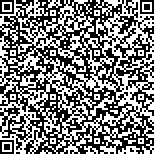| 引用本文: | 刘庆焕,白建疆,张岩,何常清,王文彤.基于指纹图谱、模式识别及多成分定量的金花清感颗粒质量评价研究[J].中国现代应用药学,2021,38(21):2701-2707. |
| LIU Qinghuan,BAI Jianjiang,ZHANG Yan,HE Changqing,WANG Wentong.Study on Quality Evaluation of Jinhua Qinggan Granules Based on Fingerprint, Pattern Recognition and Multi-components Determination[J].Chin J Mod Appl Pharm(中国现代应用药学),2021,38(21):2701-2707. |
|
| |
|
|
| 本文已被:浏览 1887次 下载 926次 |

码上扫一扫! |
|
|
| 基于指纹图谱、模式识别及多成分定量的金花清感颗粒质量评价研究 |
|
刘庆焕1, 白建疆2, 张岩1, 何常清2, 王文彤1
|
|
1.天津市医药科学研究所, 天津 300020;2.聚协昌(北京)药业有限公司, 北京 102606
|
|
| 摘要: |
| 目的 建立金花清感颗粒的HPLC指纹图谱,结合化学模式识别技术对其进行分析,并测定金花清感颗粒中绿原酸、芒果苷、连翘酯苷A、黄芩苷、牛蒡苷、汉黄芩苷和甘草酸铵的含量,为其质量评价提供科学依据。方法 采用Agilent Eclipse XDB-C18色谱柱(250 mm×4.6 mm,5 μm),以乙腈-0.1%磷酸水溶液为流动相进行梯度洗脱,建立13批金花清感颗粒的HPLC指纹图谱,采用中药色谱指纹图谱相似度评价系统结合聚类分析(cluster analysis,CA)与主成分分析(principal component analysis,PCA)对指纹图谱进行数据分析。同时测定7种有效成分的含量。结果 建立了13批金花清感颗粒的HPLC指纹图谱,相似度均>0.98,确定了17个共有峰,并指认出其中8个色谱峰,分别为2号峰绿原酸、4号峰芒果苷、6号峰甘草苷、8号峰连翘酯苷A、12号峰黄芩苷、13号峰牛蒡苷、16号峰汉黄芩苷及17号峰甘草酸铵;CA和PCA结果基本一致,将13批样品分为2类。多成分定量分析方法学考察结果表明,7个指标成分在各自范围内的线性关系(r2 ≥ 0.999 8)、精密度(RSD ≤ 1.41%,n=6)、重复性(RSD ≤ 1.31%,n=6)、稳定性(RSD ≤ 2.08%,24 h)均良好;加样回收率为97.11%~102.41%,RSD为0.80%~1.98%;13批金花清感颗粒中绿原酸、芒果苷、连翘酯苷A、黄芩苷、牛蒡苷、汉黄芩苷和甘草酸铵的含量分别为2.109~3.008,0.378~0.616,1.379~3.629,10.146~18.485,11.789~19.210,2.208~3.526,1.308~1.810 mg·g-1。结论 HPLC指纹图谱结合模式识别及多成分同时测定的方法快速、简便、重复性好,可为金花清感颗粒的质量评价提供参考。 |
| 关键词: 金花清感颗粒 高效液相色谱法 指纹图谱 多成分定量 聚类分析 主成分分析 |
| DOI:10.13748/j.cnki.issn1007-7693.2021.21.012 |
| 分类号:R284.1 |
| 基金项目: |
|
| Study on Quality Evaluation of Jinhua Qinggan Granules Based on Fingerprint, Pattern Recognition and Multi-components Determination |
|
LIU Qinghuan1, BAI Jianjiang2, ZHANG Yan1, HE Changqing2, WANG Wentong1
|
|
1.Tianjin Institute of Medical and Pharmaceutical Sciences, Tianjin 300020, China;2.Juxiechang(Beijing) Pharmaceutical Co., Ltd., Beijing 102606, China
|
| Abstract: |
| OBJECTIVE To establish the fingerprint of Jinhua Qinggan granule(JHQGG) by HPLC, analyze them with chemical pattern recognition technology, and determine the contents of chlorogenic acid, mangiferin, forsythoside A, baicalin, arctiin, wogonoside and ammonium glycyrrhizinate in JHQGG, in order to provide a scientific basis for its quality evaluation. METHODS The HPLC fingerprint of JHQGG was performed on Agilent Eclipse XDB-C18(250 mm×4.6 mm, 5 μm) column with acetonitrile-0.1% phosphoric acid solution for gradient elution, the fingerprint data was analyzed by the similarity evaluation system of traditional Chinese medicine chromatographic fingerprints combined with cluster analysis(CA) and principal component analysis(PCA). Furthermore, the contents of seven components in JHQGG were determined. RESULTS The HPLC fingerprint of 13 batches of JHQGG was established. The similarity were all >0.98. Seventeen common peaks were marked and 8 of them were identified, including chlorogenic acid(peak 2), mangiferin(peak 4), glycyrrhizin(peak 6), forsythiaside A(peak 8), baicalin(peak 12), arctiin(peak 13), wogonin(peak 16) and ammonium glycyrrhizinate(peak 17). CA and PCA were used to classify the 13 batches of JHQGG into two groups. The results of multi-component quantitative analysis methodology showed that the linear relationship(r2> 0.999 8), precision(RSD ≤ 1.41%, n=6), repeatability(RSD ≤ 1.31%, n=6), stability(RSD ≤ 2.08%, 24 h) of seven components were good, the average recoveries were between 97.11% and 102.41%, and the RSD were in the range of 0.80%-1.98%. The contents of chlorogenic acid, mangiferin, forsythoside A, baicalin, arctiin, wogonoside and ammonium glycyrrhizinate in 13 batches of JHQGG were in the range of 2.109-3.008, 0.378-0.616, 1.379-3.629, 10.146-18.485, 11.789-19.210, 2.208-3.526, 1.308-1.810 mg·g-1, respectively. CONCLUSION The method of HPLC fingerprint combined with pattern recognition and multi-components simultaneous determination is rapid, simple and reproducible, which can provide a reference for the quality evaluation of JHQGG. |
| Key words: jinhua qinggan granules HPLC fingerprint multi-components determination cluster analysis principal component analysis |
|
|
|
|
